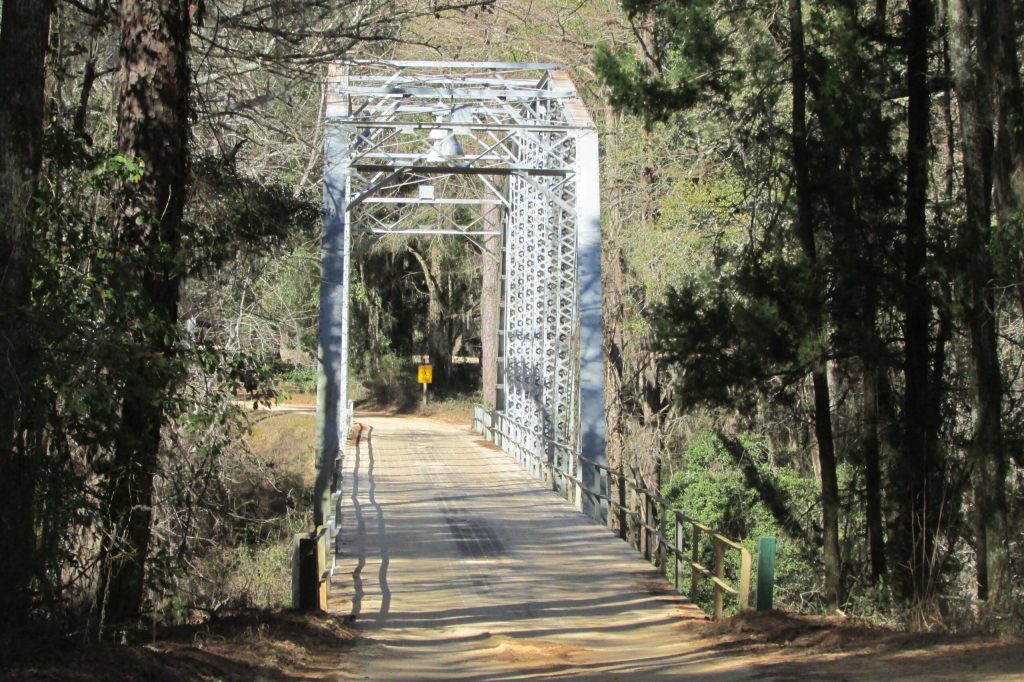Mills, Timber and Farm Towns
Published 11:30 am Sunday, May 26, 2024
|
Getting your Trinity Audio player ready...
|
Baker County is blessed with large stands of timber and many creeks which bring along with them waters that flow with strong and sturdy currents. Because of this, many mills were built along the water ways. These gave birth to towns. Most were small and had maybe a hundred to two hundred residents who worked in occupations which were mill-related. Today, I thought we could look into the history of some of these places which struggled and still have a little left in the town while others have disappeared.
Milford
Milford is an old town. Since there are no records of when she was first settled, it has been speculated that it was around 1825, right after most of the Indians left the area.
At first, it was called Mills Ford. However, when the Welch brothers came to the area and started a general store, they changed the name to Milford, after the town that was their home in Connecticut.
With the rich earth giving birth to bushels and bushels of corn, a grist mill was built along the Ichauway Nochaway Creek in 1834. It thrived for many years. In the early 1900s, a bridge was built across the Ichauway Nochaway Creek and connected the town making it one. This first bridge was made entirely of wood. In the 1930s, the wooden structure was replaced by a sturdier bridge made of steel and wood. Now this one could handle the change from horse and buggy to that of truck and car traffic. Now, because of the increase in population, another grocery store and a mercantile was opened.
Milford had a post office from January 20, 1852, to September 14, 1904. As with all of the small towns before it, when the post office closed the population declined. The major cause for the decline in residents was that the railroad was built in Leary. Therefore, the once thriving town declined. Now, it has around 100 residents.
Mimsville
Life in Mimsville is defined by Big Cypress Creek which springs to life in a large cypress swamp in eastern Early County. From there, Big Cypress Creek flows through what is left of Mimsville. Then, just outside of the remains of the town, the Big Cypress meets up with the Little Cypress Creek. Then, the two cypress creeks join hands and continue on down to fulfill their destination, that of emptying into the Flint River. All of this takes place about 10 miles southwest of Newton.
Mimsville was first settled by Robert L. Mims, who owned the first general store as well as being the first post master when the office opened on July 14, 1884. His son, James, took over this job on January 30, 1904. Predominantly an agricultural community, the post office was often referred to as the “farmer’s office. Stopping progress, the post office closed on January 3, 1914, when the mail went to Elmodel. Now, there are several farm families working the fertile soil along Ichauway Nochaway Creek.
Hoggard’s Mill
The town of Hoggard’s Mill was, in its day, very progressive. At one time it had a saw mill, two grist mills, and a cotton gin. The town also exported lumber and it’s by products. There was enough of a population to provide support for three general stores, three physicians, two lawyers, and a ferry landing that was nearby.
Its post office opened on September 12, 1872, with James Couch serving as the first post master. When the post office closed on September 14, 1907, Jack Chesser was the last postmaster there. Today, all that is left of Hoggard’s Mill is the landing where Norman’s Ferry was. This is still a quiet, peaceful place to launch your boat in a section of the Flint River that is not easily accessed.
Pretoria
Another ghost town is at Pretoria. Its only sign of life is the road sign which says Pretoria Road and GA 91. However, back in its beginning, it was the home of the Red Cypress Lumber Company. It was the impetus which started this town. A large operation, their timber was sold all through Baker County. Wooden products, from cross ties, saw logs, fence posts and turpentine were also sold there. So much lumber was hauled to market that the company decided to build their own railroad. It became known as the Tram Road with its purpose being to haul logs from the thick forests to the mill. This road crossed the Elmodel-Newton Road about a mile from the center of Elmodel. Then, it circled toward the Chickasawhatchee Creek, that is south of Elmodel, which at this time, was growing because of its closeness to the railroad in Leary. With Elmodel becoming a good-sized town, I wonder if some of the heritage of Pretoria was not taken over by Elmodel.
Hawkinstown, Phillipsburg, Pondtown, Red Store Cross Roads
In some cases, I was not able to find out anything about some ghost towns. Hawkinstown, which at one end of the town, was a sign off Sunset Ave, (GA 200) with an identical town sign by GA 90, marking the beginning and the end of the town.
Phillipsburg was mentioned as the place where the Little Cypress Creek and Big Cypress Creek pass on by while on their way to the Flint River. This puts Phillipsburg close to Mimsville. Its landscape includes several ponds and several ruins of local churches. There also are a few churches that are still in use.
Another small ghost town was called Pondtown. GA 200 goes through this ghost town to where it meets with GA 37. Its name suits it as it has more than sixteen ponds in what once was its borders.
Called Red Store Cross Roads, most of this town’s churches have survived the test of time. However, most buildings weren’t that lucky and have succumbed to the ravages of time. Most notably is the remains of a small once red store that is an abandoned building at the cross roads giving the town its name.
However, some towns are struggling and still have life. They are clinging to it, holding on with their finger nails! Now that people are realizing the need for farms and fertile soil, these areas are beginning to come ever so slowly back to life. Here is the story of some of these.
Bethany
Bethany is located in the western side of Baker County. The first settler there came in 1855. Preacher James Blumer White stood on land that was mostly wooded. He not only saw beauty but possibilities. He chose to settle on 250 acres of land and build the first school house in the community. It was a one room, log building. This was in 1855. He named the school and community Bethany.
Families were coming into this section of Georgia, homesteading and acquiring land by grants from the government. As the little community began to grow, the first school was built. At first, it doubled as a church on Sunday called Missionary Baptist Church. It wasn’t long before a larger church was needed. A one room building made from heart of pine lumber was erected in the late 1890s. After the original school house was erected, three more were built. However, in the 1940s the school closed. There has not been a school in Bethany since then.
At one time, six roads converged together making this the center of the town. It became known as Six Points. The town proudly grew and in her heyday had a church, school, cotton gin, grist mill, peanut sheller, and a cemetery. At the intersection of Bethany Road and Patmos Road is one of the oldest cemeteries around. Also, Little Cypress Creek and Big Cypress Creek empty into Flint River here, in Bethany.
Patmos
John Frizzel Griffin was the first settler in this town, which grew up in the northwestern corner of Baker County. His home was built in 1839, and was located one mile west of Ichauway Nochaway Creek. Now that Griffin claimed his land, he was ready to marry his sweetheart, Mary Elizabeth. This took place on August 30, 1840. With this section of Baker County having quite a few hills, they chose one of them and built their dream home there.
This region of Georgia was considered a desolate place. It had lots of ponds and swamps. It was one of the last places that the Indians left so there were few settlers. Thus, the name Patmos, after the isolated Isle of Patmos in the Bible.
The town of Patmos was located 2 miles north of Ivy Mill on Mill Creek Road. Mill Creek flows in an easterly direction through the county and empties into Ichauway Nochaway Creek. Aside from turning the mill stones, it provided the settlers with a great place to swim and have picnics.
In 1882, a Freewill Baptist Church was formed. It is still there and is located on the corner of GA 216 and Ivy Mill Road. First school came about in 1870. In 1964, it closed and is now a private home.
Patmos was a typical farm community that enjoyed the fellowship of church, and school. At one time there were three general stores which were located next to each other. Many times, residents would gather at the stores and businesses in town to visit and catch up on the local news. The post office was at nearby Milford. It provided rural mail service until 1955, when all of the mail was now routed to Leary.
The chief manufacturing was the turpentine distillery which employed around 20 families. With the abundance of yellow pine in the area, the turpentine distillery was a busy place as it manufactured a lot of resin, especially in 1939, probably because of the looming darkness of World War II, requiring resin to be used in building ships. This boom continued on until 1947.
Many people have come and gone in Patmos. There still are several residents there.
Ivy Mill
Ivy Mill was a small, tight knit community that was situated on a one hundred acre cypress pond, the type that Baker County is famous for. Located about 16 miles northwest of Newton on the Patmos-Morgan Road, it was the site of a mill. At one time, the land around was owned by Robert Dorsey Ivey, Sr. and his two sons, James and Robert. After their father’s death, James and Robert Ivey moved out of Baker County. The mill and all of its holdings was bought by a man named Lester Tabb.
Ichauway Nochaway Creek was the main reason for locating the grist mill where it was. When in operation, the huge grind stones which ground the corn into meal were powered by powerful oxen. Eventually, a water storage tank was erected on the east side of the mill where a well was dug. Before electricity, the water tank was water powered by a small dam where the flow of the water over the dam wall provided the power.
There is a covered bridge over the Ichuaway Nochaway Creek. It once was attached to the side of the original mill. The wooden bridge pilings remained visible until extended repairs were required. This rebuilding began in the 1990s.
In its heyday, Ivy Mill had many employees, most which were post War Between the States workers that stayed on and worked at the mill. Once a stage coach road, people still travel to Ivy Mill on the Ivy Mill Road and Bouie Road, between the tiny town of Ivy Mill and Patmos to get this fresh ground grain. The grist mill is still operating but on a much smaller scale compared to the by gone days. It is the oldest manufacturing company in Baker County.
Lamar
The post office is what gave life to Lamar and the War Between the States was its death knell. Back in 1857, when the post office operated there, it had 200 residents. However, during the War, the population began to decline and Lamar never bounced back. Then, when the mail was rerouted to Cheevertown, and the post office closed in March of 1891, giving Lamar its final blow. With this, the population went down quickly. The number of residents in Lamar was zero in 1980. However, in recent years, small farmers have moved back to this area to work this very fertile land.






